Meet an Educator is a monthly series by Early Bird, where we feature the work of educators across India who are actively spreading the joy of birds and nature. This month’s featured educator is Aditi Rao, a nature educator from the rainforests of Sirsi (Karnataka), who manages education, outreach, and communications for Nature Classrooms.
Do tell us about yourself, where you are from, and your work
My name is Aditi Rao, and I come from a remote village in Sirsi, Karnataka, where I grew up in a farming family surrounded by the rainforests of the Western Ghats. I hold a Master’s degree in Wildlife Conservation Action and currently work with Nature Classrooms as the Manager for Education, Outreach, and Communications.
My work primarily involves conducting teacher-training workshops for educators, mostly in Kannada, and developing nature-learning resource materials. I also occasionally facilitate demo sessions with students as part of these workshops, supporting educators in implementing nature-based learning in their classrooms. In addition, I occasionally take on freelance translation work, translating nature education and conservation-related resources into Kannada.
What excites you about the natural world?
Everything. Growing up in the Western Ghats, I’ve always been curious about the non-human lives I shared space with. From fireflies that wandered into my room at night, to the beautiful amphibians and cicadas whose calls could sometimes drown out even the heaviest rain, and the snakes that came after them. From the plants, some of whose names I still don’t know, to the ones I grew up learning about. Sometimes, it’s the smell carried by the breeze; other times, it’s the bird calls that catch my attention. Often, it’s the ants, wasps, bees, and spiders displaying the most fascinating behaviours.
As a child, I experimented with nature—catching ants and feeding them to insectivorous plants. And now, I find myself simply observing it and wondering. What excites me most is how each ecosystem makes me feel something different. Rivers make me feel free and flowing, constantly moving yet grounded. Rainforests invite me to look inward to slow down and observe wonders that are quietly camouflaged all around. A quiet shift in how I feel, think, or notice. It’s this emotional and sensory connection that keeps drawing me back to the natural world.

When and how did you get interested in bird/nature education?
I’ve always loved teaching and presenting. Back in school, a naturalist once visited and took us on a walk around the campus, pointing out plants, insects, and birds. I found it so fascinating that I eventually began tagging along with him for community outreach activities related to herpetology.
In college, I got opportunities to conduct sessions for school students. After my very first session, the mix of satisfaction and adrenaline was so powerful that I couldn’t stop. It was pure joy, sharing stories about the creatures I loved and watching students light up with awe and wonder, discovering animals they had never noticed before or didn’t know existed right next to them.
Since then, I’ve continued taking sessions in various settings, including the Karnataka Forest Department’s Chinnara Vana Darshana initiative. Sharing about the natural world has become one of the most fulfilling parts of my journey.

What do you hope to achieve through your education work?
I want to see children spending more time outdoors, observing, noticing, and being curious about the world around them—just being present in the moment and making connections. I hope they grow up with a deep sense of wonder, empathy, and love for the life that surrounds them.
At the same time, I want teachers and educators to be equally curious and engaged with the living world. Their sense of curiosity and openness can deeply influence how children relate to nature. It’s not just about learning facts but about building relationships with a tree, a bird, or even a trail of ants and feeling a sense of belonging in the natural world.
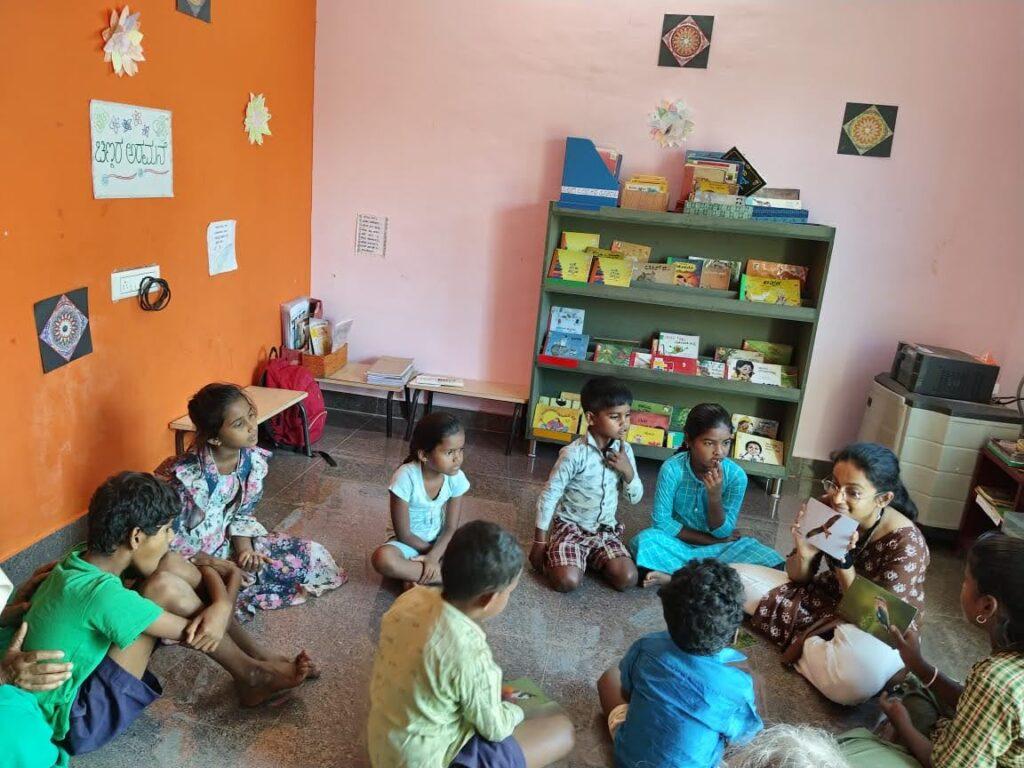
Why do you believe it is important for children to learn about birds or connect with nature?
Because nature is accessible to everyone, it holds immense potential—not just for teaching facts or educating children, but for building relationships, nurturing emotions, and simply slowing down to look around.
Learning with and through nature helps children understand that they are part of something much larger. I believe watching the colours of a butterfly, listening to bird calls, or noticing the patterns of leaves, all these small moments, can help children become more observant, empathetic, and inclusive.
Nature doesn’t require prior knowledge or equipment; it only asks for presence. I feel that when children spend time outdoors, they begin to relate to the living world not as something separate, but as something they belong to. This connection has the power to shape how they view themselves, others, and the planet.
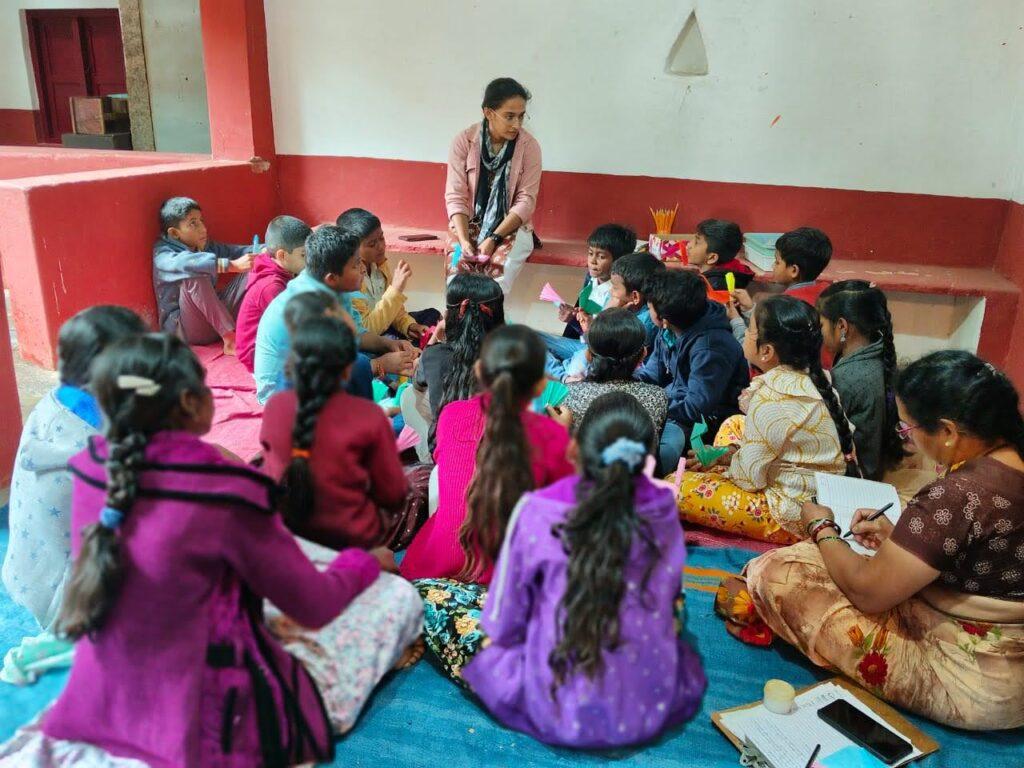
What tools or resources have helped you in teaching about birds? Can you describe an approach that has worked exceptionally well for you?
I usually use resources from Nature Classrooms and Early Bird, as both provide materials that are accessible and relevant. Nature Classrooms, in particular, offers location-specific resources, which makes it easier to connect with local contexts. One of the key advantages of both platforms is language access; they offer resource materials in Kannada and many other regional languages, which is essential for the communities I work with.
What has helped me most in my approach is designing each session based on the specific surroundings of the place. I try to use local names, references from the local culture, and keep the session rooted in the context of the children’s everyday experiences. Learning a little about the local ecology, language, and cultural practices before planning the session has made a significant difference. It not only helps in building better engagement but also ensures the learning feels meaningful and familiar to the learners.
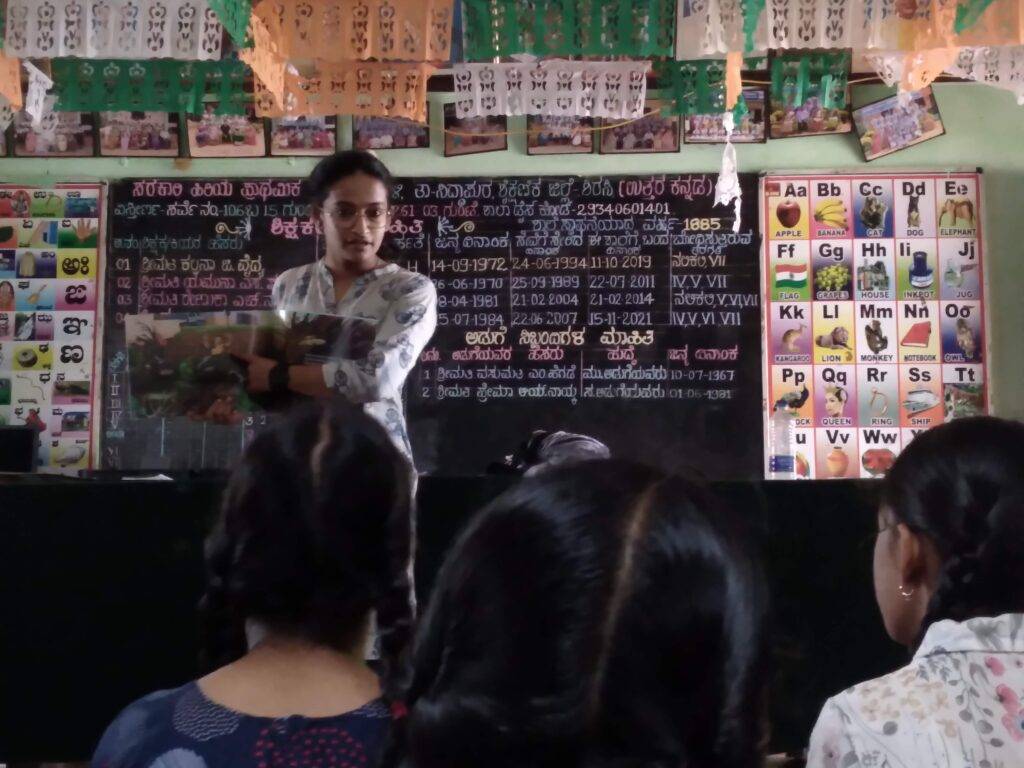
Photo credits: Dr. Ovee Thorat
Have you encountered a significant challenge as a bird/nature educator, how did you overcome it?
One of the main challenges I face as a nature educator is that many of the sessions are one-time or of very short duration. This makes it difficult to sustain students’ enthusiasm for nature over time. Nature learning is most impactful when it’s continuous and slow, allowing space for repeated observation and reflection, but that’s hard to achieve in single encounters.
Another significant challenge is navigating the expectations within school settings. Often, there is pressure to design sessions that align tightly with existing lesson plans and to “finish” the content quickly. This is quite the opposite of what nature-based learning asks of us: to slow down, observe, wonder, and be present.
To address these challenges, I try to involve teachers as much as possible. When teachers are actively engaged during sessions, they’re more likely to carry the experience forward in their classrooms. We also design lesson plans that include open-ended activities, such as observation tasks, questions without fixed answers, and space for reflection, so that even within time constraints, students are encouraged to slow down and stay curious.
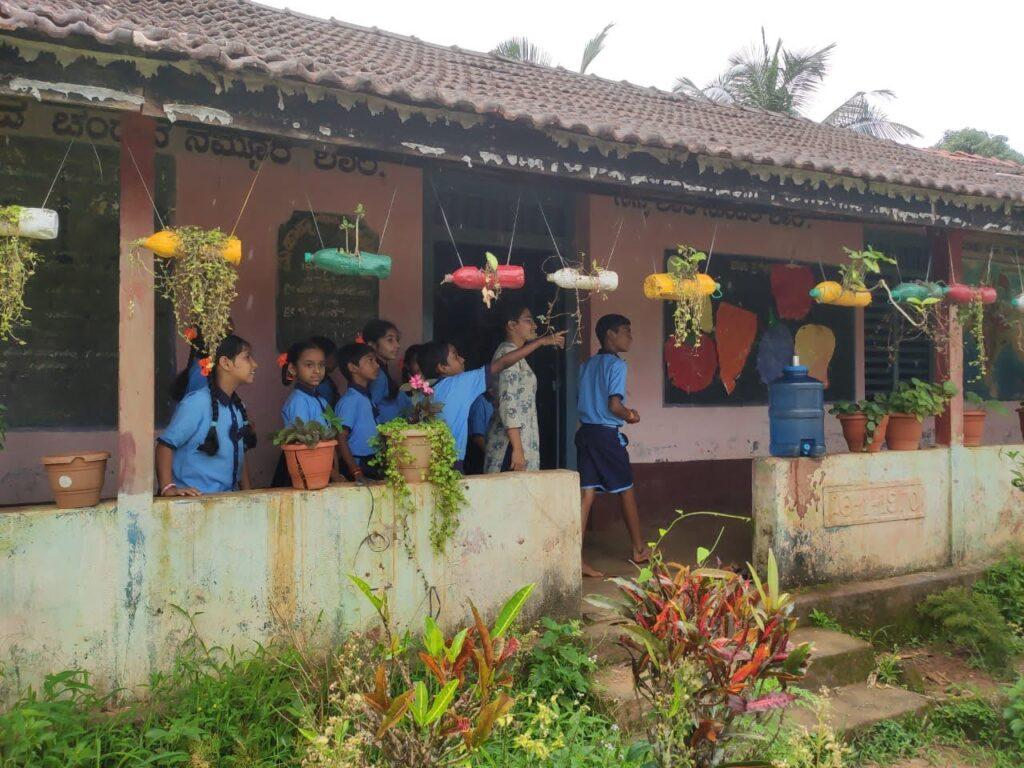
Photo credits: Deepak Gokarna
Do share any memorable moment or experience you have had in teaching kids about birds/nature. Can you recall any insightful instance that shaped your perspective?
Every session with younger audiences has been a learning experience for me, mainly because of the different kinds of pure, thought-provoking questions they ask. Many times, I don’t have the answers immediately. Their questions often push me to go back, read more, and rethink not just the facts but also the way I communicate, the behaviours I show, and the ethics I uphold in the space.
One of the incidents that stayed with me is from a rural Kannada-medium school in Sirsi. During a bird walk, one student confidently identified all the birds in the area and even described their behaviours. Curious, I asked how he knew so much. He replied, “I hunt and eat them, that’s how I know.” I paused. The other students looked at me, expecting a clear judgment or correction. But I found myself at a crossroads, wanting to be inclusive of his lived reality while also holding space for empathy toward the lives of birds.
I didn’t respond immediately, not because I agreed or disagreed, but because I needed to reflect. That moment taught me that within a single group, children can come from vastly different contexts, and as educators, we need to be sensitive to that. It reminded me that creating a respectful, inclusive learning space means listening deeply and responding with care, not just with ready-made answers.
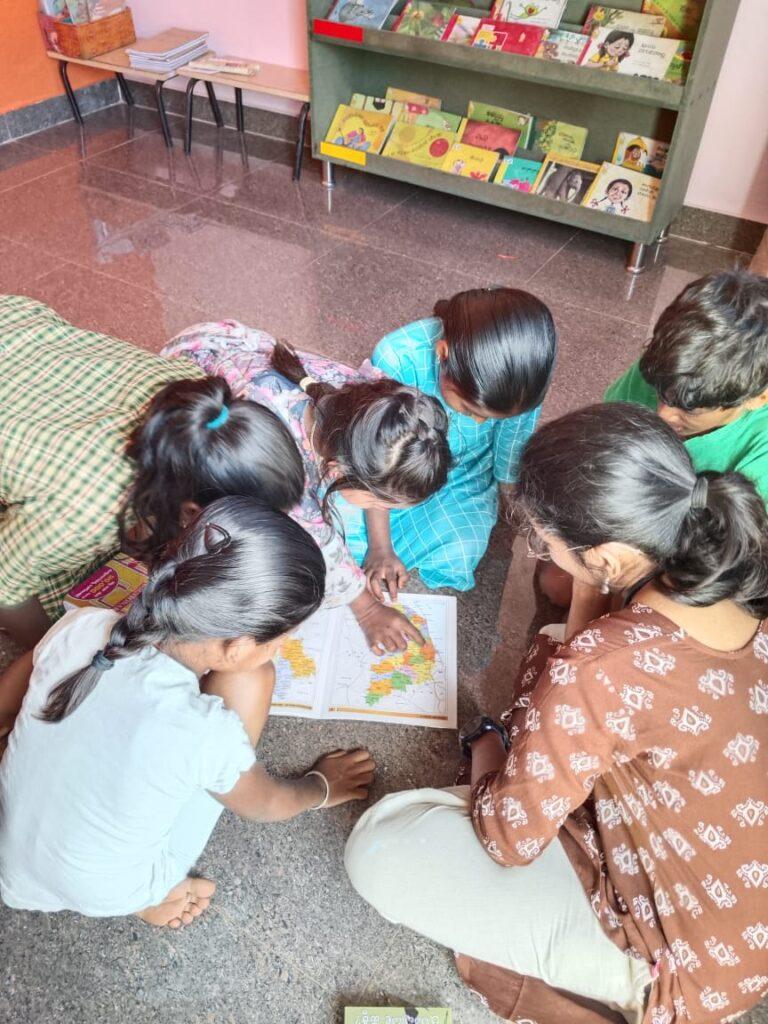
Have you noticed any changes in your learners after they received exposure to birds and nature-based learning? If yes, what are they? If not, why do you think that is?
At the same school I mentioned earlier, where I regularly conducted teacher-training workshops, I also began occasional sessions with students. After the very first session, during the break, many students ran over to me with insects and frogs in their hands, eager to show me. They had seen my excitement during the session and simply wanted to share in that joy.
But over time, something shifted. Instead of bringing creatures to me, they started taking me to where the creature was. Each time I arrived at the school, a few students would rush over, excitedly telling me about what they had seen around their homes, on the way to school, or within the school grounds.
The change wasn’t limited to students. Teachers began sharing their own lists of sightings. The school garden started hosting more caterpillars, previously considered pests. Spider webs were no longer immediately cleaned from classrooms. These weren’t changes I asked for; they came naturally as students and teachers began observing more closely and forming connections. Some species even earned nicknames from the children, simply because they had started sharing space with them. I feel this is what long-term, regular nature-learning sessions can bring.
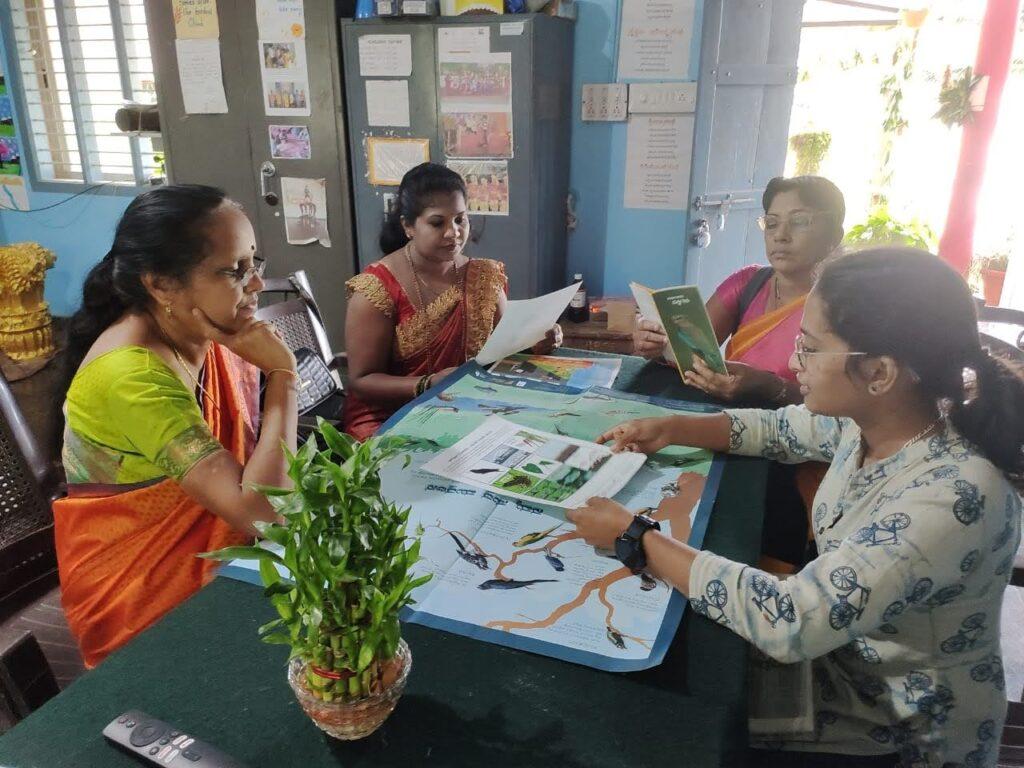
What message would you have for your fellow educators or somebody starting out in their nature education journey?
For me, the love and emotional bond with nature are at the core of everything I do. It’s this deep connection that inspires my work in nature education. That bond motivates me to share, protect, and keep learning. It also reminds me why I’m doing this. Is it for personal satisfaction? Is it the joy of seeing others grow curious and excited about nature during a session? Or is it something deeper, something that links all of us to the living world around us?
Another thing I strongly believe in is the need for more collaboration among nature educators—not just to co-create or run programmes together, but simply to learn from each other’s experiences, adapt, discover new tools, and to be there for one another—to listen, support, and share. Nature education can be very personal and emotionally demanding at times. Having a community makes the journey more enjoyable.

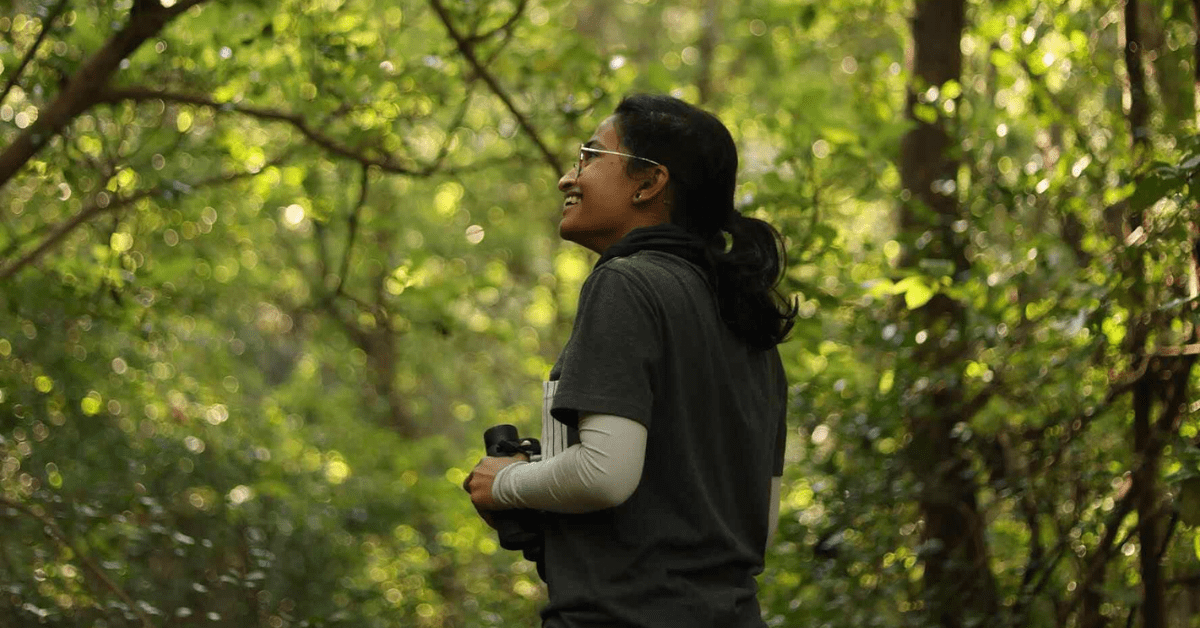
I greatly enjoyed reading about Aditi Rao’s work in connecting people with nature I find her responses very true, her heart in just rhe right place. I too conduct sessions with a small group of children, connecting them with the natural world, having experienced the pull and power of it very tangibly since childhood. Please send me Aditi’s contact details if possible. She can write to me at principal@chirag.org. I am ag Chirag School, Nainital.
Thank you for sharing this comment, ma’am. We have passed on your information to Aditi. You may also connect with her directly. Her contact information is here: https://www.natureclassrooms.org/about